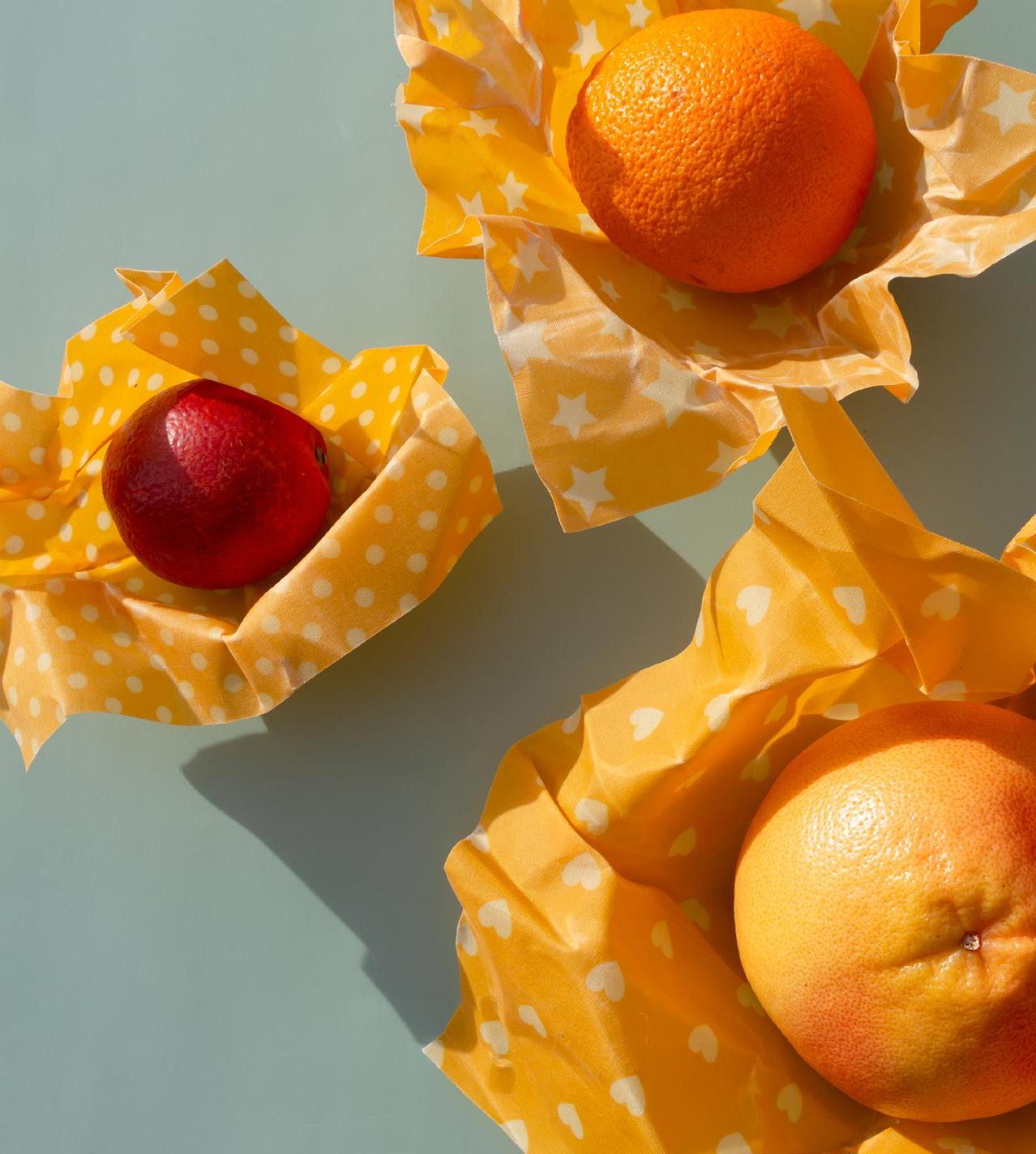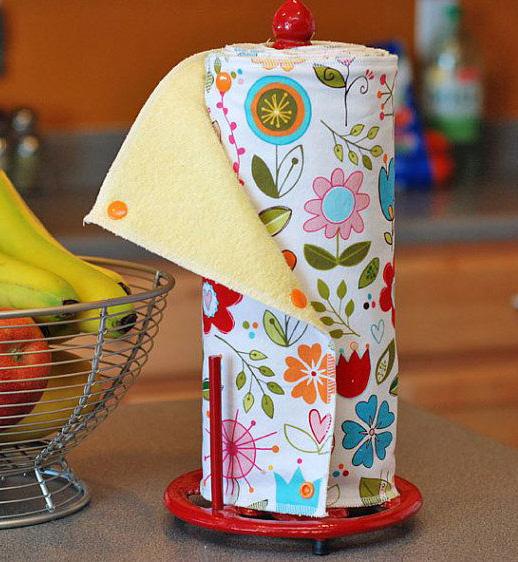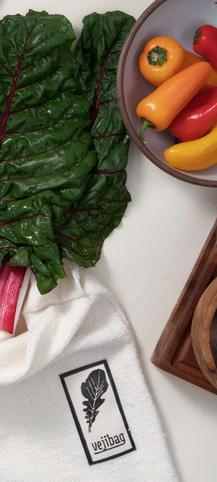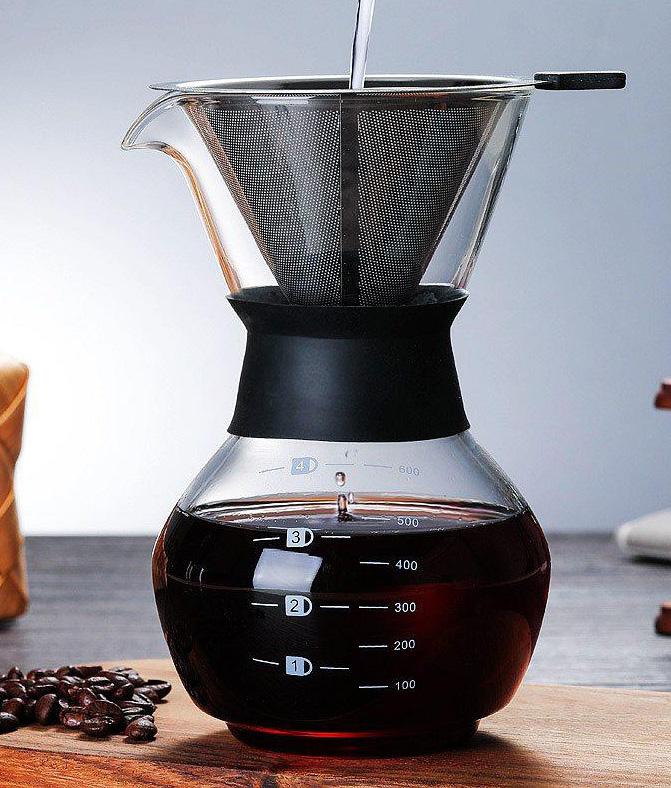
4 minute read
Going Green: Want to make your kitchen more green?
Going Green
WHILE COOKING
It may seem daunting to convert your kitchen into an eco-space. But, little-by-little, it’s easily done. Actually, easier by the day as more companies unveil new products and gadgets to assist.
One of the simplest ways to kickstart an eco-friendly kitchen makeover is by swapping out single-use paper products for reusable cloths. You can now do simple Google searches and find myriad “paperless towels” that are handmade from soft and absorbent cotton, are machine washable and come in bleached or unbleached options.
Speaking of machine washable, the kind of dish detergent you use can also have an impact on the environment. Pollutants and microplastics going down the drain and into waterways are always a concern. When choosing a detergent for your eco-friendly kitchen, make sure that it is biodegradable.
What about plastic bags? We use them in myriad ways. Storage, carrying, cooking…
A super-basic solution for avoiding plastic bags when cooking is to keep a set of floursack dish towels in your kitchen. They can be used to wrap up bread, cover bowls for short periods of time, or to cover things like sauerkraut or kombucha while it ferments. For bread specifically, make sure to invest in a beeswax-infused cotton bag. It will keep the bread fresh without using a plastic bag or container.
Plastic wrap is a must in any kitchen, but if you’re trying to cut out plastic, you’ll need to find a more sustainable option. To wrap up food without using plastic, use beeswax paper. It replaces plastic bags and plastic wrap and is super easy to clean. The gold standard to start with when you are trying to be greener in the kitchen. If you’re vegan or primarily plant based, you may be looking for a product that doesn’t contain beeswax but are made with candelilla and non-GMO soy wax.
Of course, Ziploc is an American tradition. We Ziploc everything – from food to photos. But reusable silicone bags are a green alternative to plastic storage bags. There are many to choose from – Stasher bags billed as “the world’s first fully functional, self-sealing, nonplastic bag” and Rezip’s stand-up, airtight, leakproof, zipper-top bags made from FDA–grade PEVA material to name but two.

And what about storage containers? No kitchen is complete without them – they are a necessary item. It is actually quite easy to swap out plastic for more environmentally friendly materials. Invest in a set of glass or Pyrex bowls and use a reusable wrap to seal. If you prefer not to use reusable wraps coated in oils and wax, you can opt for (also reusable) fabric bowl covers with elasticized edges. The elastic lets each cover fit snugly around a bowl, and the fabric is easy to wipe down or launder.
And one can never go wrong with a mason jar – large or small. They aren’t just for canning anymore. Mason jars are great for holding nuts and seeds, chocolates, bulk items – you name it, and a mason can probably hold it in an ecofriendly fashion.
Now, let’s move to vegetables – specifically in the realms of buying and storing. It’s easy to replace single-use plastic produce bags with reusable cotton produce bags. Netted bags (which can be found on Amazon) are breathable, lightweight, all-natural, and hold everything from loose lettuce to lemons.
But cotton sacks are also a game-changer once your produce finds its way into the refrigerator, too. They can be used to keep your veggies fresh for longer. One particular bag, The Vejibag, is incredibly popular. When stored in plastic, veggies turn into mush when not used right away. With the Vejibag, vegetables “breathe.” To use, simply wet the cloth, throw in some fresh produce, then toss the whole thing in the crisper drawer. Easy, peasy.


One of the worst transgressors on green living are single-use coffee pods. Sure, they are super easy and convenient. But eco-friendly, they sure are not. If you are interested in creating an eco-friendlier kitchen and own a pod-friendly machine, you may want to think on how to limit your pod use. If you think that cutting down the amount of java that you drink in a day would be a Herculean task – you can Google search and easily find a stainless-steel reusable pod for your system. Another great alternative is to purchase a stainless-steel pour-over coffee maker. The stainless-steel mesh is very fine, so it keeps the grounds out, and the result is comparable to paper filters but without the waste.
Finally, if you are addicted to seltzer water or soda, (who isn’t to La Croix?) another way to cut down on your waste is by making your own at home so that you’re not throwing away piles of aluminum cans away each week. A soda making machine is an incredibly eco-friendly kitchen product. No packaging, no waste, and it doesn’t take up too much counter space. Plus, there are many models to choose from.
Remember, Rome wasn’t built in a day, and neither will be your eco-friendly kitchen. But take it piece by piece – and soon enough – your kitchen will be rolling in the green!










